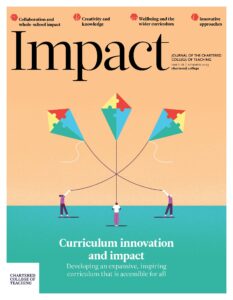Reciprocal reading in science: Improving reading and developing scientific understanding
Written by: Katharine White

7 min read
KATHARINE WHITE, DIRECTOR OF SCIENCE, LIONHEART EDUCATIONAL TRUST, UK
Multiple research studies have suggested that the reciprocal reading strategy can be effective in increasing reading comprehension. In the aftermath of the pandemic, this method could be a potential solution to closing the gap and improving student independence, by developing confidence when a variety of texts are used. Implementation of the reciprocal reading strategy has been developed across my trust school departments as a cross-curricular literacy methodology. For science, the strategy can be very effective to complement the curriculum and for some of the difficulties faced by students studying the course. The quantity of content within the science curriculum can benefit from studying a complex scientific article, utilising tier three vocabulary and relating to real-world situations.
Multiple research projects have focused on reciprocal reading, based on the original research by Palincsar and Brown (1984),
Join us or sign in now to view the rest of this page
You're viewing this site as a guest, which only allows you to view a limited amount of content.
To view this page and get access to all our resources, join the Chartered College of Teaching (it's free for trainee teachers and half price for NQTs) or log in if you're already a member.
- Hattie J (2009) Visible Learning: A Synthesis of Over 800 Meta-Analyses Related to Achievement. London: Routledge.
- Hattie J (2011) Visible Learning for Teachers. Routledge.
- Ofsted (2012) Moving English forward. Available at: https://webarchive.nationalarchives.gov.uk/ukgwa/20141107031303/http://www.ofsted.gov.uk/resources/moving-english-forward (accessed 19 April 2023).
- Ofsted (2022) Research review series: English. Available at: www.gov.uk/government/publications/curriculum-research-review-series-english/curriculum-research-review-series-english (accessed 19 April 2023).
- Palincsar AS and Brown AL (1984) Reciprocal teaching of comprehension monitoring activities: Technical report no. 269. National Institute of Child Health and Human Development. Available at: https://files.eric.ed.gov/fulltext/ED225135.pdf (accessed 19 April 2023).
- Quigley A and Coleman R (2021) Improving literacy in secondary schools: guidance report. Education Endowment Foundation. Available at: https://educationendowmentfoundation.org.uk/public/files/Publications/Literacy/EEF_KS3_KS4_LITERACY_GUIDANCE.pdf (accessed 19 April 2023).
- Rivera-Rodriguez I (2019) Reciprocal teaching: An evidence-based reading comprehension strategy. Available at: https://rsetasc.pnwboces.org/reciprocal-teaching-an-evidence-based-reading-comprehension-strategy/#:~:text=Reciprocal%20Teaching%3A%20An%20Evidence%2DBased%20Reading%20Comprehension%20Strategy,-By%20Ileana%20Rivera (accessed March 2023).
0
0
votes
Please Rate this content
Subscribe
Please login to comment
0 Comments
Oldest
Newest
Most Voted
Inline Feedbacks
View all comments










